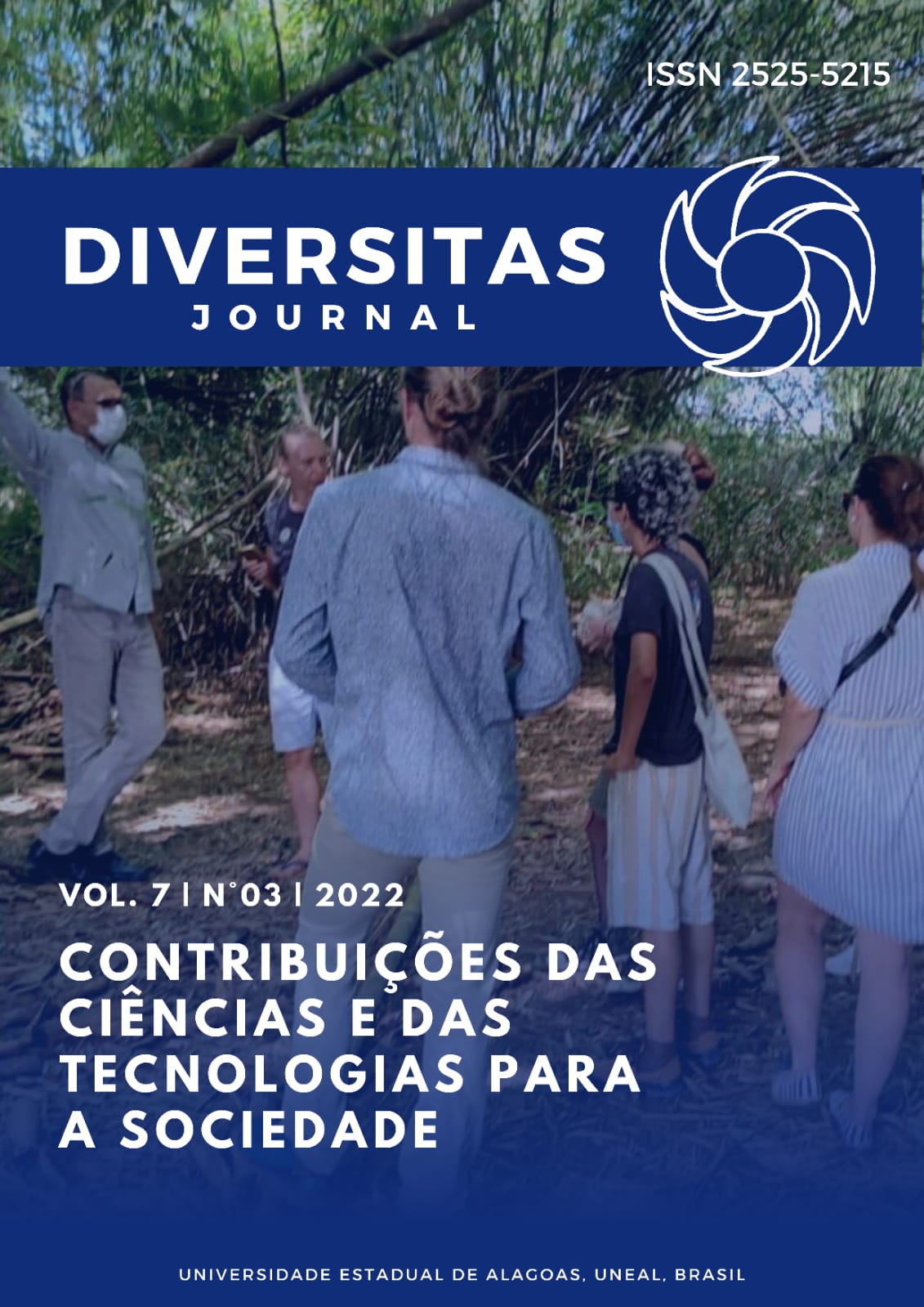Germination and post-seminal development of cambuí (Myrciaria floribunda (H. West Ex Willd.) O. Berg.) in vitro
DOI:
https://doi.org/10.48017/dj.v7i3.2283Keywords:
Myrtacea, cambuízeiro, seed.Abstract
Myrciaria floribunda (h. West ex Willd.) O. Berg, known as cambuí, is a fruit shrub of Family Myrtaceae. It’s mainly propagated by seeds and presentes slowness unevenness in the germinative process. For methods of assexual germination, like the in vitro cultive of M. floribunda O. Berg, there are few reports, requiring further studies. This paper aimed to avaliate the in vitro germination of sementes of M. floribunda O. Berg, in diferente storage times, growing media and genotypes. The seeds were taken from ripe fruits of M. floribunda O. Berg, grown in the experimental orchard of CECA/UFAL in Rio Largo – AL. The outline was entirely randomized, in a factorial scheme of 4x2x2, in three storage times (±8ºC of refrigeration for 7 days, 15 days and 30 days) and at room temperature for 24 hours; two growing media (ágar + sacarose and MS) and two genotypes colors of M. floribunda O. Berg (red and Orange), 5 repetitions and 3 seeds per plot. The ágar + sacarose media provided a bigger germination percentual, root and aerial part length, and the MS media contributed for a bigger number of leaves in seedlings of M. floribunda O. Berg. The viability of this fruit shrub seeds in the study was affected by long storage periods at ± 8°C temperature. The genotype type (red of orange) have little or none influency in the evaluated variables.
Additional Files
Published
How to Cite
Issue
Section
License
Copyright (c) 2022 Hilda Rafaella da Silva Santos, Leila de Paula Rezende, Tatiana de Lima Salvador, Ana Rosa de Oliveira Farias, Débora Sofia Pimentel de Oliveira , Eurico Eduardo Pinto de Lemos

This work is licensed under a Creative Commons Attribution 4.0 International License.
The Diversitas Journal expresses that the articles are the sole responsibility of the Authors, who are familiar with Brazilian and international legislation.
Articles are peer-reviewed and care should be taken to warn of the possible incidence of plagiarism. However, plagiarism is an indisputable action by the authors.
The violation of copyright is a crime, provided for in article 184 of the Brazilian Penal Code: “Art. 184 Violating copyright and related rights: Penalty - detention, from 3 (three) months to 1 (one) year, or fine. § 1 If the violation consists of total or partial reproduction, for the purpose of direct or indirect profit, by any means or process, of intellectual work, interpretation, performance or phonogram, without the express authorization of the author, the performer, the producer , as the case may be, or whoever represents them: Penalty - imprisonment, from 2 (two) to 4 (four) years, and a fine. ”


















